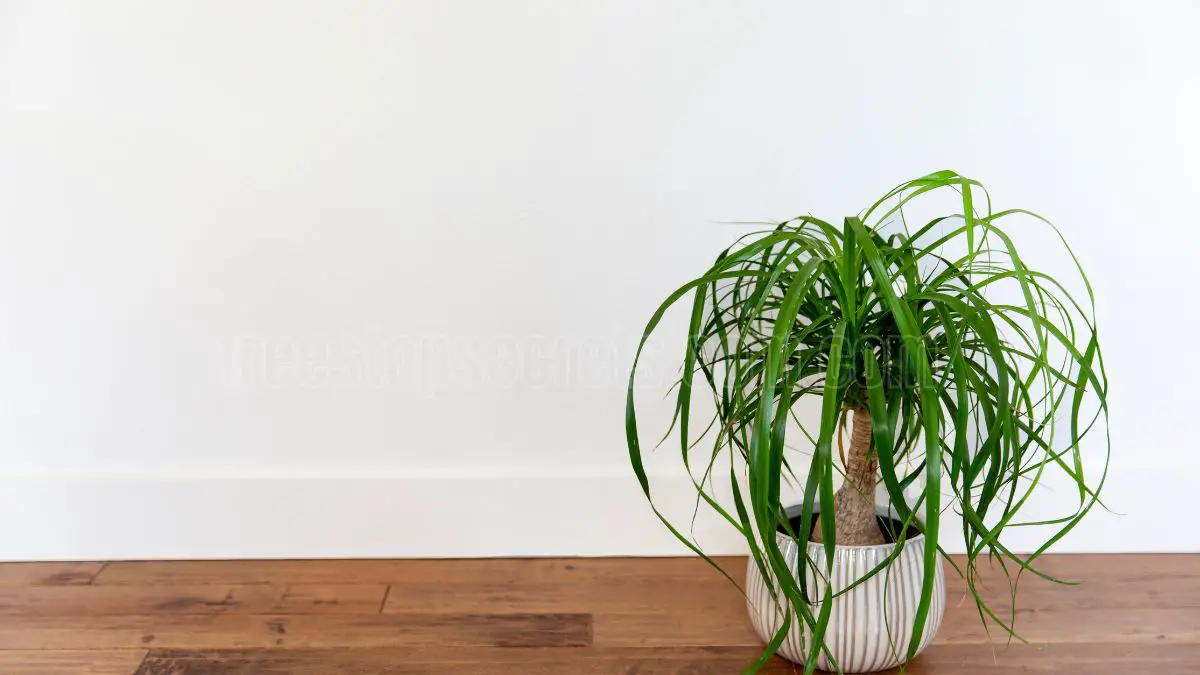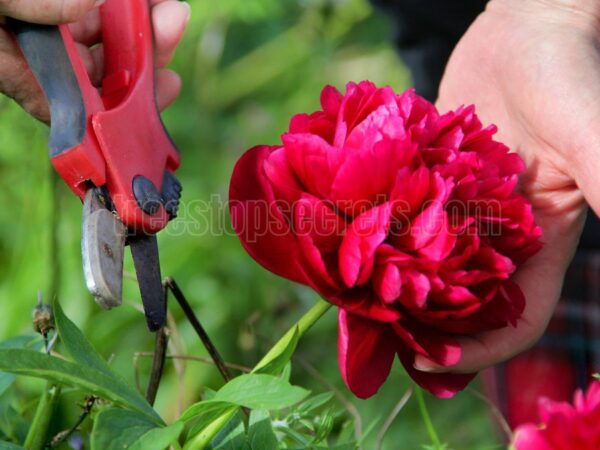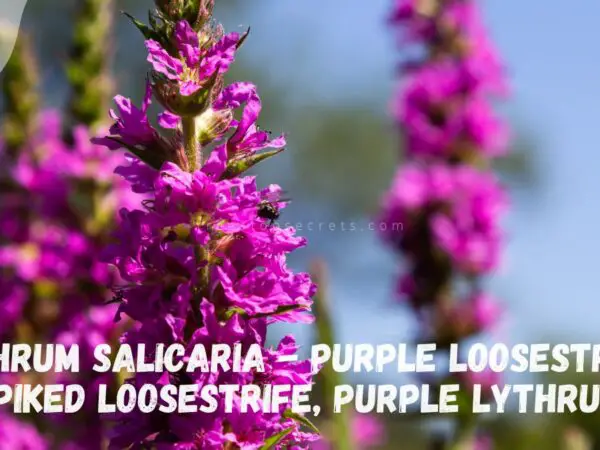Ponytail palms are unique plants that make excellent indoor plants, but they do require some special care. The ponytail palm is instantly recognizable with its swollen, bulbous trunk and long, strap-like, curving foliage. Its minimal care requirements are a big reason it’s become so popular as a houseplant.
To encourage your ponytail palm to grow, keep it in a spot with bright, indirect light. Just be sure to allow the soil to dry all the way through between waterings. With its warmth-loving nature and love for well-draining soil, this plant is perfect for homes and offices.
Understanding these basic care requirements can help you enjoy the beauty of the ponytail palm while enhancing your living space.
Key Takeaways
- These fun, sculptural indoor plants are actually members of the Agave family. Their bulbous trunks and slender leaves add an instant tropical vibe, making them perfect for any indoor setting.
- These houseplants need bright, indirect sunlight around 4-6 hours per day. They require a loose, well-draining potting mix to avoid root rot, making them an ideal indoor plant.
- Regular watering based on soil moisture is crucial, typically once a week, with reduced frequency during winter months to avoid overwatering.
- Keeping humidity moderately high and temperatures consistently between 60-90°F will ensure healthy growth, especially when grown indoors in dry climates.
- The most frequent problems are overwatering and pest infestations. Conducting regular inspections of plants can catch issues early and allow for more proactive treatment.
- Propagation is easy, too, using offsets or pups from more mature plants, helping indoor enthusiasts grow their collections with success.
Understanding Ponytail Palms
Ponytail palms, or Beaucarnea recurvata, are unusual houseplants that are loved for their striking looks and minimal maintenance. They are a member of the Agave family. Ponytail palms have a distinct thickened trunk full of water and long, strappy leaves that cascade down and resemble a ponytail.
This unique shape stands out and attracts attention like no other. It brings a piece of the tropics indoors, making home decor more lush and inviting with a little bit of that exotic flair.
What is a Ponytail Palm?
Ponytail palms will get fairly big inside, up to 6-8’ tall. They’re really slow growers, growing only about 6 inches per year on average. That’s why many people refer to them as “elephant foot” plants due to their swollen trunk base.
Unlike actual palms, these plants have a sturdier trunk and less segmented leaves. There are some variations as well, but each one still boasts all of the adorable qualities.
Natural Habitat and Growth Patterns
Though native to Mexico, these plants do well in deserts, showing off their tolerance to low humidity levels. They thrive in warm environments ranging from 65-85°F (18-29°C), so make sure to keep them away from chilly drafts.
Considerations such as amount of light and soil quality play an important role in their growth, requiring well-draining soil and plenty of sunlight.
Benefits of Having a Ponytail Palm Indoors
Ponytail palms offer tremendous beauty, adding gorgeous greenery to any space. They provide air-purifying benefits too, helping to improve indoor air quality.
Their easy care requirements of just watering every two weeks and occasional fertilization times them perfectly for busy lifestyles. Additionally, they are non-toxic to pets and humans, although their long, sharp-edged leaves require some caution.
Essential Care Practices
To maintain a healthy indoor ponytail palm, understanding its unique care requirements is essential. With appropriate watering, sufficient sunlight, and the right soil type, including a succulent potting mix, this tropical plant can create a stunning display in your home.
1. Watering Guidelines for Optimal Growth
Watering once a week, letting the soil dry all the way down before watering again. Use a finger test or moisture meter to determine soil moisture. If it is dry, you’ll know that you need to water!
During winter, reduce watering to avoid root rot. The plant will need even less moisture during its dormancy stage.
2. Ideal Light Conditions for Indoor Environments
It’s true that ponytail palms do best when they have 4-6 hours of bright, indirect light each day. Not enough light will result in leggy growth and leaves turning yellow.
Place the plant close to sunny windowsills where it can get bright indirect light.
3. Temperature and Humidity Requirements
It’s best to keep the temperature between 60-90°F for ideal growth. Though the palm can stand temperatures down to 40°F, it is preferable to keep it above 50°F.
Moderate to high humidity levels are preferred. Using humidifiers or keeping trays of water nearby can help increase moisture.
4. Choosing the Right Soil and Potting Mix
Use a cactus potting soil that drains well to avoid root rot. Make sure pots have plenty of drainage holes.
If necessary, add perlite or coarse sand to improve drainage.
5. Fertilization Schedule and Nutrient Needs
Fertilize your stunning ponytail palm once or twice during the growing season with a balanced houseplant fertilizer to avoid nutrient burn.
Common Issues and Solutions
Despite being resilient beauties, the stunning ponytail palm is susceptible to a few key problems that need addressing. Scheduling regular inspections is important for catching issues early on, such as brown tips, so they can be addressed with less costly, more efficient interventions. Just like any other living being, proactive indoor ponytail palm care is key to keeping the plant happy and thriving.
1. Identifying Signs of Overwatering vs. Underwatering
Signs of overwatering include wilting, yellowing leaves and smelly soil. Underwatering leads to dry, crispy leaves and leaf drop. Examine moisture levels to determine if you’re overwatering or underwatering.
It needs to feel dry before you touch it when you go to water again. Strike a proper balance to prevent root rot caused by overwatering or dehydration caused by underwatering.
2. Pest Infestations and Effective Treatments
Ponytail palms are prone to common pests such as spider mites and scale insects, especially during winter months. Taking the time to conduct regular inspections can lead to discovering the infestation early.
More organic treatments like neem oil or insecticidal soap can do the trick. Designating a no-gaard zone around the plant and regularly cleaning the area can prevent pests from establishing.
3. Pruning and Cleaning Techniques for Healthier Plants
Prune them back, removing damaged/dead growth to a point that will foster new growth and create a desirable shape. Cleaning the leaves on a regular basis will help remove dust, which can improve the plant’s ability to photosynthesize.
All of these practices help promote a healthy and happy plant.
4. Seasonal Care Adjustments
Care practices should change with the seasons. During winter months, water less frequently and make sure the plant is getting plenty of bright, indirect light.
Monitor temperature and humidity carefully. Ponytail palms do best in temperatures ranging from 60-80°F (15-27°C) with humidity levels of 40-50%.
Propagation Techniques
Whether you’re a new plant parent or an experienced plant lover, propagating the stunning ponytail palm is a fun way to grow your indoor garden. When propagation works, you can greatly increase the number of plants you have, strengthening the link to the original healthy mother plant and helping to deliver more vibrant new foliage.
1. Best Methods for Propagating Ponytail Palms
The easiest and most successful propagation technique involves offsets, or pups. These pups, as they are called, develop at the base of larger ponytail palms.
These pups can be carefully removed and repotted. You can propagate new plants from the stem by taking cuttings. Allow them to callous over for a few days before you plant them.
Providing a well-draining soil mix is very important, as it will help keep moisture at bay to avoid potential root rot.
2. Step-by-Step Propagation Process
-
Prepare the soil: Use a mix designed for succulents or cacti.
-
Take cuttings: Using a sharp, clean knife, cut just below a leaf node.
-
Callous the cuttings: Allow them to dry for 2-3 days.
-
Plant the cuttings: Place them in the prepared soil, ensuring they are upright.
-
Water sparingly: Mist the soil lightly and keep it moist but not soggy.
-
Provide care: Place in bright, indirect light and maintain warmth.
Patience is essential during the rooting process of the stunning ponytail palm, which may take a few weeks.
3. Challenges in Propagation and How to Overcome Them
Root rot and slow growth are just a couple of the common challenges. To fight them, make sure that moisture levels are such that the soil is allowed to dry down between waterings.
Keeping these propagules in ideal light and temperature conditions (70-80°F) will help ensure vigorous growth.
Enhancing Indoor Aesthetics
Combining ponytail palms with home decor instantly enhances any location. Their distinctive profile and leaf texture enhances any aesthetic, whether it’s clean-lined contemporary or laid-back boho.
Placing these plants in key locations can help use them as focal points themselves or soften the appearance of a sharp room angle.
1. Best Placement for Ponytail Palms in Your Home
The ideal locations for ponytail palms depend on light conditions.
Ponytail palms do best in sunny rooms or near windows with lots of natural light. To prevent leaf burn, ideally, you want to put them in bright rooms with indirect sunlight.
They thrive in rooms where the temperature is stable, avoiding cold drafts or sudden changes in temperature.
2. Companion Plants That Thrive with Ponytail Palms
When considering companion plants, you might choose:
- Snake Plant
- ZZ Plant
- Pothos
- Spider Plant
Each of these companion plants have the same light and watering requirements, so they’ll thrive together without conflict.
Combining them with ponytail palms increases the visual charm. It beautifies your indoor environment, making it a healthy, thriving and welcoming place to be.
3. Alternative Indoor Plants to Consider
If you’re looking for some more variety, consider indoor plants such as a rubber plant or peace lily.
These plants share care needs too, so balancing a variety of plants in your collection will be easy.
Incorporating both types adds contrast and beauty, while promoting a balanced ecosystem in your home.
Conclusion
Ponytail palm indoor care is easy, enjoyable, and well worth it. These quirky specimens are well worth the little bit of care they require to flourish in your home. With the right light, water, and humidity, they can thrive. Fixing simple mistakes at the design stage avoids costly repairs down the line. Plus, ponytail palm propagation can help you grow your collection or create perfect gifts. Beautifying your home with these plants is an easy way to bring warmth and life to your space.
If you’re looking for a low-maintenance plant, think about incorporating a ponytail palm into your home. With minimal upkeep and eye-catching allure, they work perfectly in any environment. Get started on your indoor gardening adventure and experience the joy these natural beauties can add to your life.
Frequently Asked Questions
How much light do ponytail palms need?
How much light do ponytail palms need? While the stunning ponytail palm can handle a bit of direct sun, exposure to harsh midday sun can cause brown tips on their leaves, turning them brown and crispy.
How often should I water my ponytail palm?
To prevent root rot in your stunning ponytail palm, ensure the soil dries out completely between waterings.
What temperature is best for ponytail palms?
These plants will do best in the air temperature range of 60°F to 80°F. Just be sure to avoid placing them in drafts and areas with sudden temperature changes.
How can I tell if my ponytail palm is overwatered?
The signs of overwatering, such as yellowing leaves and a mushy trunk on your indoor ponytail palm, indicate a lack of growth; cut back on watering immediately.
Do ponytail palms need fertilizer?
Yes, fertilize your stunning ponytail palm during the growing season (spring and summer) with a balanced, water-soluble fertilizer once a month to support its growth.
Can I propagate my ponytail palm?
While the stunning ponytail palm cannot be propagated by leaf cuttings, it can be propagated by separating offsets or pups from the base. Let them callous over, then plant in a succulent potting mix for optimal drainage.
Are ponytail palms pet-friendly?
Are ponytail palms, a type of tropical plant, pet-friendly? This makes them a safe option for households with pets.
Image Source: Paid image from CANVA




